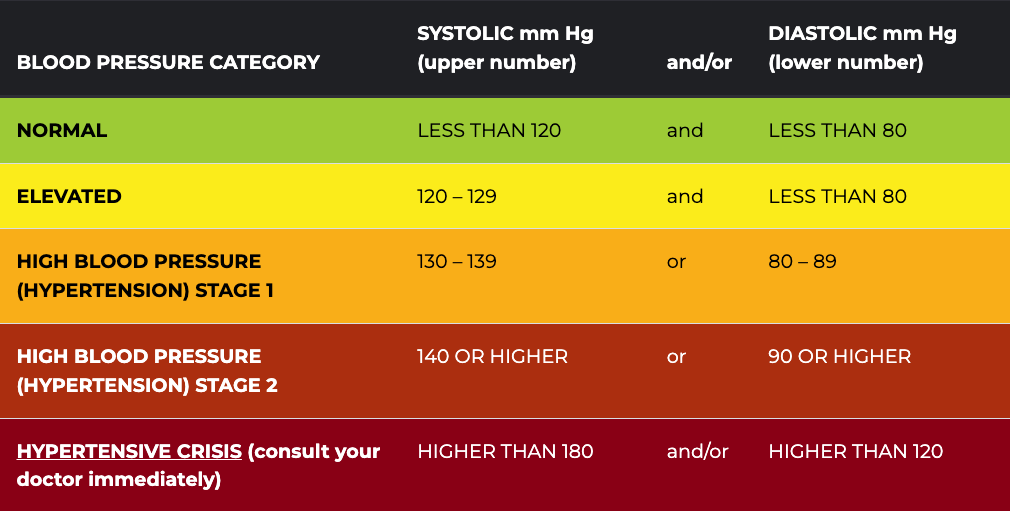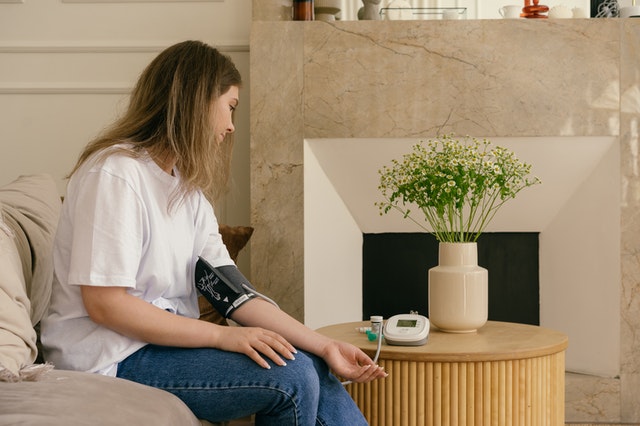Do you know what your resting blood pressure is? Let’s learn how to check since May is High Blood Pressure Education Month.
Healthy Blood Pressure
A healthy blood pressure reads with the top (systolic) number less than or equal to 120 mm Hg and the lower (diastolic) number less than or equal to 80 mm Hg.
According to the American Heart Association:
- Systolic blood pressure (the first number) – indicates how much pressure your blood is exerting against your artery walls when the heart beats.
- Diastolic blood pressure (the second number) – indicates how much pressure your blood is exerting against your artery walls while the heart is resting between beats.
While more attention is given to the systolic reading, both numbers are important and can lead to a diagnosis of hypertension, or high blood pressure.
According to the Centers for Disease Control and Prevention (CDC), 116 million or roughly 47% of American adults have a diagnosis of hypertension and of those, only about 24% have it under control. In 2019, 516,955 American deaths included hypertension as a primary or contributing cause of death. Uncontrolled hypertension can lead to a higher risk of heart attack and stroke, leading causes of death in the U.S.
What can I do?
Use this health observance month as an opportunity to check your blood pressure. If you don’t have a cuff at home, many grocery store and pharmacy chains have automated machines that will do blood pressure readings. If you get a reading that is higher than expected, wait a few minutes, relax and try again. Call your doctor if you get multiple high readings. If your systolic number is 180 or higher or if your diastolic number is 120 or higher, this is HYPERTENSIVE EMERGENCY. Seek immediate medical treatment.
Lifestyle habits can also contribute to a healthy blood pressure. Eating a diet rich in fruits, vegetables, fiber and whole grains with limited amounts of saturated fats will help keep arteries clean and help prevent clots. Regular exercise also keeps the heart healthy by creating healthy blood flow.
Know your numbers.
Know your numbers. They could quite literally save your life.

Image from American Heart Association
Related articles
Healthy Kitchen, Healthy Family

